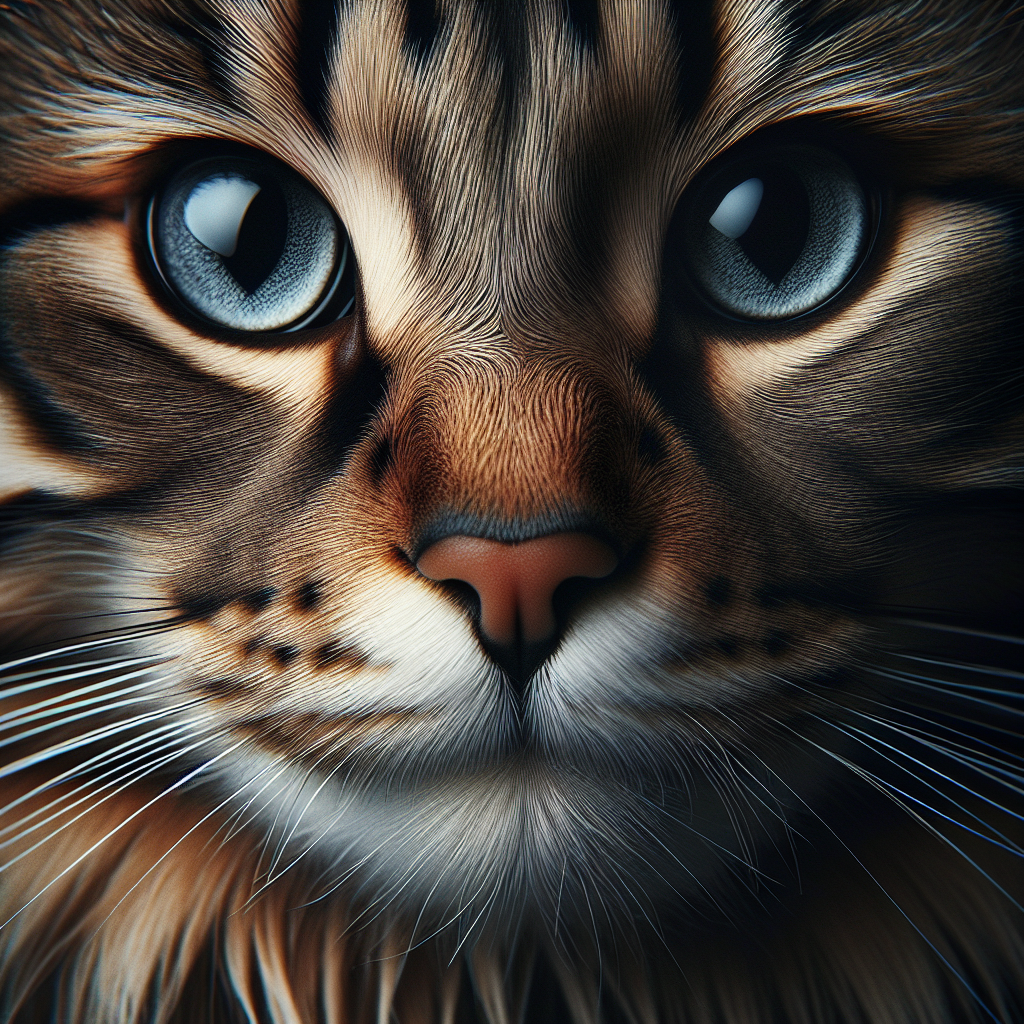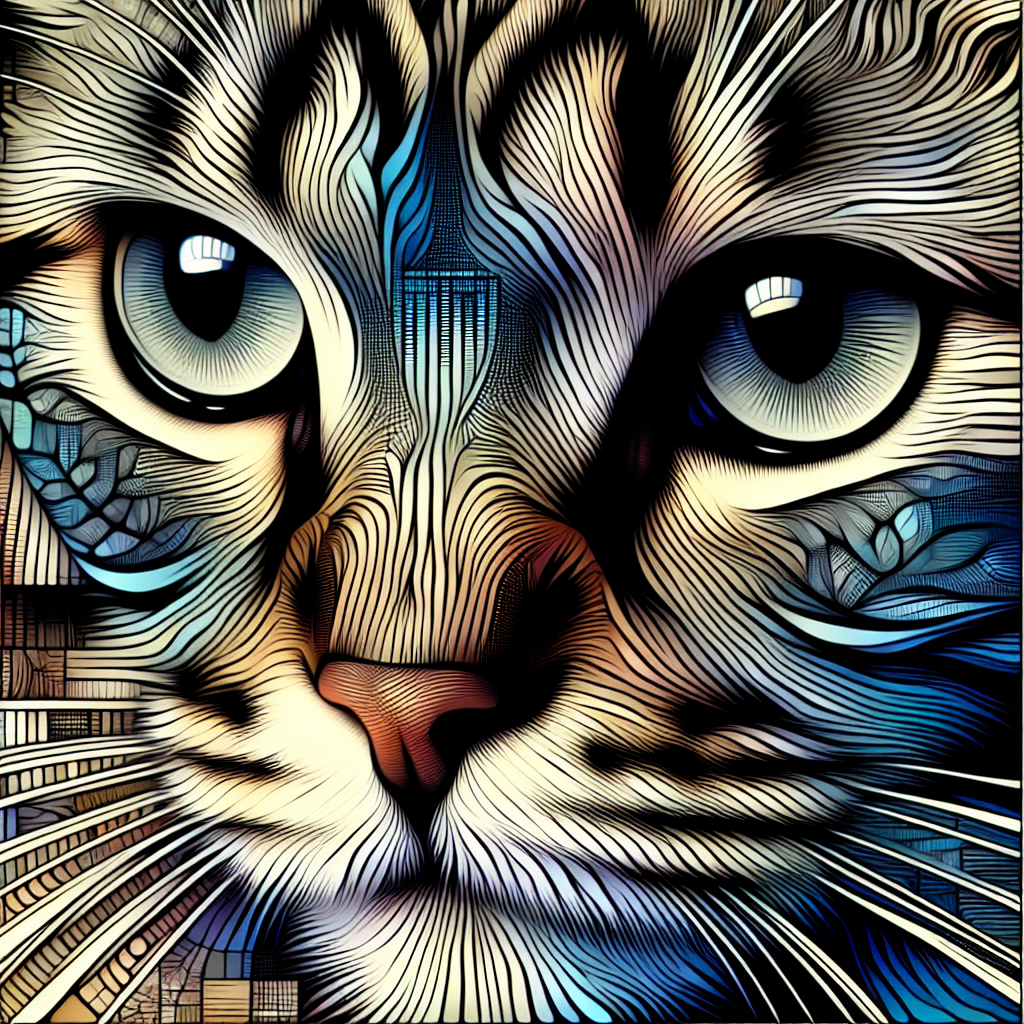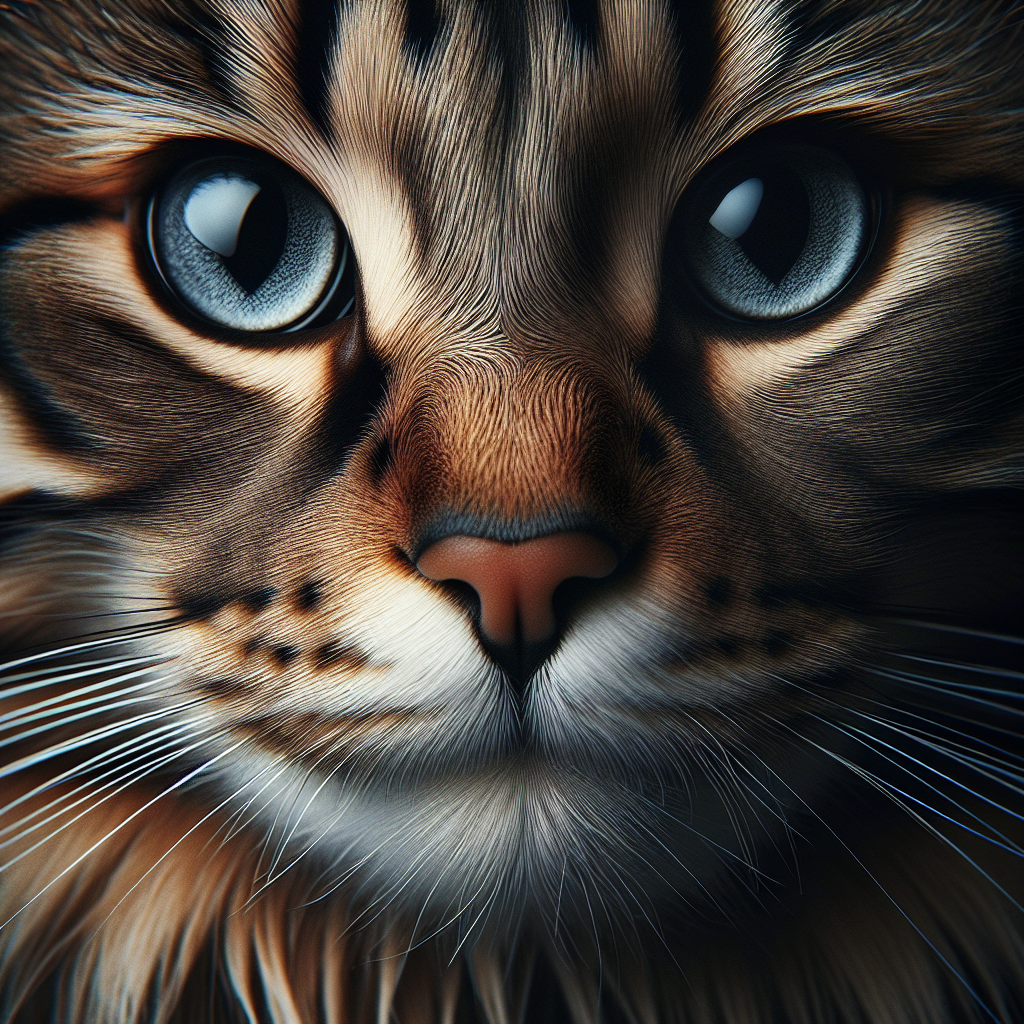In the world of feline companions, the question often arises: are all cats tabbies? While it may seem like a straightforward query, the answer proves to be more intricate than expected. Tabbies, known for their distinct striped or spotted coat patterns, are indeed the most common type of cat. However, the diversity of feline genetics brings forth a captivating array of coat colors and patterns, making the world of cats a mesmerizing tapestry of uniqueness. Join us as we explore the fascinating world of feline genetics and uncover the truth behind the question, “Are all cats tabbies?” Prepare to be amazed by the multitude of tales this captivating topic has to offer!
What is a tabby cat?
A tabby cat is a domestic cat that is characterized by its unique coat patterns. Unlike specific breeds, tabby refers to the coat pattern of a cat regardless of its breed. Tabby cats are known for their distinctive markings that include stripes, spots, or swirls on their fur. These patterns can vary greatly, making each tabby cat unique and beautiful in its own way.
Definition
The term “tabby” originally comes from the word “atabis,” which refers to a type of silk fabric with a striped pattern. Over time, the term was adopted to describe the striped or patterned fur of cats. Today, tabby is used to categorize cats with various coat patterns and is recognized by cat organizations worldwide.
Physical characteristics
Tabby cats come in different sizes and body types, just like any other domestic cat. They can have short, medium, or long fur, depending on their breed or genetic makeup. While tabby cats are best known for their coat patterns, they also possess other physical characteristics that are typical of domestic cats, such as almond-shaped eyes, rounded ears, and a slender or muscular body.
Coat patterns
The coat patterns of tabby cats are what make them so visually appealing. The patterns can be divided into different types, each with its own unique characteristics. Let’s explore some of the most common tabby coat patterns:
Types of tabby cats
Classic tabby
The classic tabby pattern is recognized by bold, swirling markings on the cat’s body. These markings often form a “bullseye” pattern on the cat’s sides, with parallel lines running along its spine. The classic tabby pattern is reminiscent of the natural markings seen on wild cats and is highly sought after by cat enthusiasts.
Mackerel tabby
The mackerel tabby pattern is characterized by narrow, vertical stripes running down the cat’s body. These stripes resemble the skeleton of a fish, hence the name “mackerel.” The markings are evenly spaced and create a beautiful, striped appearance on the cat’s fur.
Spotted tabby
Spotted tabby cats have distinct spots instead of stripes. The spots can be large or small, and their arrangement on the cat’s body can vary. Some spotted tabbies have spots that are evenly distributed, while others may have clustering spots that create a unique pattern. Spotted tabbies often resemble miniature leopards, adding a touch of exoticness to their appearance.
Patched tabby
Patched tabby, also known as tortoiseshell tabby, combines the distinctive tabby markings with patches of solid colors. These patches are typically random and asymmetrical, creating a beautiful mosaic-like effect on the cat’s fur. The combination of the tabby patterns and solid color patches makes patched tabby cats truly eye-catching.
Ticked tabby
Ticked tabby cats have a unique coat pattern where individual hairs have alternating bands of color. This gives the impression of a solid-colored cat from a distance, but upon closer inspection, one can see the subtle tabby markings. The most well-known example of a ticked tabby is the Abyssinian breed, which exhibits a rich and warm coat with subtle ticking.

Other coat patterns
While tabby cats have a wide variety of coat patterns, there are also other distinct coat patterns seen in domestic cats that are not classified as tabbies.
Solid color
Solid color cats are those that do not have any visible patterns or markings on their fur. They can come in a variety of colors, including black, white, gray, brown, and more. Solid color cats, also known as self-colored cats, have a sleek and elegant appearance, showcasing the beauty of a single hue.
Bicolor
Bicolor cats are characterized by having two distinct colors on their fur. The most common bicolor pattern is the tuxedo cat, which has a predominantly black coat with distinct white markings on its chest, paws, and face. Bicolor cats can have different color combinations, and each individual has a unique distribution of colors on their coat.
Colorpoint
Colorpoint cats, also known as Siamese cats, have a unique coat pattern where their bodies are lighter in color, while their points (ears, face, paws, and tail) are darker. The contrast between the body and the points creates a visually striking appearance. Colorpoint cats come in various shades, such as seal point, blue point, chocolate point, and lilac point.
Calico
Calico cats are famous for their vibrant coats that consist of white, orange, and black patches. The patches can be large or small, and their arrangement on the cat’s body is often asymmetrical. Calico cats are predominantly female, and their coat pattern is a result of random X-chromosome activation during embryonic development.
Tortoiseshell
Similar to calico cats, tortoiseshell cats have patches of multiple colors on their coat. However, tortoiseshell cats typically have smaller and more blended patches, creating a marbled appearance. The colors in tortoiseshell cats can vary and include black, orange, cream, and brown. These cats are also predominantly female due to the genetics behind their coat pattern.
Smoke
Smoke cats have a unique coat pattern where each hair is a solid color at the base and fades to a lighter shade towards the tips. The fur is often darker at the roots, giving the illusion of a smoky or shadowy appearance. Smoke cats can come in various colors and are prized for their striking and mysterious look.
Chinchilla
Chinchilla cats have a coat pattern similar to smoke cats, but with a more pronounced tipping effect. The fur is white or pale at the base and heavily tipped with a darker color, creating a sparkling or frosted appearance. Chinchilla cats are often associated with the Persian breed and have a luxurious and regal look.
Van
Van cats have a mostly white coat with a few patches of color on the head and tail. The colored patches are typically found only on the extremities and form a striking contrast against the white fur. Van cats are known for their captivating beauty, and their coat pattern is often associated with breeds like the Turkish Van.
Genetics and inheritance
The coat patterns seen in tabby cats and other domestic cats are determined by a combination of genetic factors.
Tabby gene
The tabby pattern is believed to be controlled by a gene called the “agouti gene.” This gene plays a crucial role in determining the pigmentation of individual hairs on a cat’s fur. The specific variants of the agouti gene influence the development of different coat patterns, resulting in the various tabby patterns seen in cats.
Other coat color genes
In addition to the agouti gene, there are several other genes that affect a cat’s coat color and pattern. Genes like the “O” gene, which determines if a cat will have solid or spotted coloration, or the “cs” gene, responsible for producing pointed coloration, all contribute to the overall appearance of a cat’s coat.

Tabby markings in non-tabby cats
While the tabby pattern is most commonly associated with tabby cats, it can also be present in cats that do not have a tabby coat.
Ghost markings
Ghost markings refer to faint traces of tabby markings that can be found on cats with solid color coats. These markings are generally not as pronounced as those seen on tabby cats but can be visible under certain lighting conditions or with close observation. Ghost markings are a fascinating reminder of a cat’s genetic heritage.
Agouti gene
The agouti gene, responsible for the tabby pattern, can also influence the appearance of other coat patterns in non-tabby cats. It can create subtle striping or markings on the fur of cats that do not display the classic tabby coat. This shows that while a cat may not have a tabby pattern, it still carries the genetic influence of the tabby gene.
Mackerel/Spotted patterns in non-tabby cats
Mackerel and spotted patterns can occasionally be seen in cats that do not have a tabby coat. These patterns may appear as faint stripes or spots on cats that have a solid color or other coat patterns. These subtle tabby-like markings add an element of surprise to the appearance of certain cats, hinting at their hidden tabby ancestry.
Tabby and non-tabby breed examples
Tabby cats can be found in numerous breeds, and their coat patterns are not limited to any particular breed. Let’s take a look at some popular tabby breeds and breeds that do not typically display tabby markings.
Popular tabby breeds
Some of the most well-known tabby breeds include the Maine Coon, the Bengal, and the Abyssinian. All of these breeds exhibit the tabby pattern in its various forms, showcasing the diversity and beauty of tabby cats.
Breeds without tabby markings
While tabby cats can be found in a wide range of breeds, there are many breeds that are not typically associated with tabby markings. Examples of breeds that often lack tabby patterns include the Persian, the Siamese, and the Sphynx. These breeds have other unique coat patterns or colors that set them apart from the tabby group.
Tabby symbolism and cultural significance
Tabby cats have held a special place in human culture and symbolism for centuries. Their unique coat patterns have inspired folklore, superstitions, and even artistic representations.
Folklore and superstitions
In various cultures, tabby cats have been associated with different beliefs and superstitions. In ancient Egyptian culture, cats, including tabbies, were revered and considered sacred. They were believed to bring good luck and protect against evil spirits. In medieval Europe, tabby cats were often associated with witchcraft and were believed to be the familiars of witches.
Symbolic meanings
Tabby cats have also come to represent certain traits and qualities. They are often seen as symbols of independence, resilience, and adaptability. The unique markings of tabby cats remind us of the beauty that can be found in diversity, as each cat’s coat pattern is a reflection of its individuality.
Tabby-related art and media
The distinctive coat patterns of tabby cats have been celebrated in various forms of art and media. From ancient Egyptian sculptures to modern-day paintings and digital illustrations, tabby cats have been depicted as subjects of artistic expression. They have also made appearances in literature, movies, and cartoons, capturing the hearts of cat lovers worldwide.
Tabby cats as pets
Tabby cats make wonderful companions and have unique personality traits that set them apart from other cats.
Personality traits
Tabby cats are known for their friendly and sociable nature. They often possess an easygoing temperament, making them suitable for households with other pets or children. Tabby cats are often described as loyal, affectionate, and playful, bringing a joyful energy into their owners’ lives.
Care and maintenance
Like all cats, tabby cats require proper care and maintenance to ensure their well-being. This includes providing a balanced diet, regular veterinary check-ups, and grooming sessions to keep their coat clean and healthy. It is important to engage tabby cats in interactive play and provide them with scratching posts and toys to satisfy their natural instincts.
Health issues
While tabby cats, like any other cat, can be prone to certain health issues, they do not have any specific health concerns directly related to their coat pattern. However, it is important to monitor their overall health, provide a nutritious diet, and seek veterinary care promptly if any health issues arise.
Tabby cats in shelters and rescues
Tabby cats are among the most common cats found in shelters and rescues. Their diverse coat patterns make them appealing to potential adopters, and their friendly personalities make them great companions.
Prevalence of tabby cats in shelters
The prevalence of tabby cats in shelters can be attributed to their wide popularity and the fact that they can be found in many different breeds. This, coupled with their ability to reproduce easily, often leads to a higher number of tabby cats needing homes.
Adoption rates
Tabby cats are often adopted quickly due to their attractive appearance and friendly nature. Many tabby cats find loving forever homes soon after arriving at shelters or rescues. However, it is important for potential adopters to remember that each cat’s personality and individual needs should be considered when making an adoption decision.
Promotion and awareness campaigns
Several organizations and campaigns focus on promoting the adoption of tabby cats and raising awareness about their unique qualities. These campaigns aim to celebrate the beauty of tabby cats, dispel any misconceptions about them, and encourage people to consider adopting tabby cats from shelters and rescues.
Conclusion
Tabby cats are a common but diverse group of domestic cats with a wide range of coat patterns. From the classic tabby to the mackerel, spotted, patched, and ticked tabbies, each pattern adds a unique charm to these feline companions. While tabby cats have a distinct association with the agouti gene and the tabby pattern, their markings can also be seen in non-tabby cats, albeit in more subtle ways. Celebrated in folklore, art, and media, tabby cats have left their mark on human culture throughout history. As pets, tabby cats bring joy, companionship, and a touch of individuality to our lives. With their prevalence in shelters and rescues, tabby cats offer a wonderful opportunity for adoption and appreciation of the diverse beauty found in cat coat patterns.

